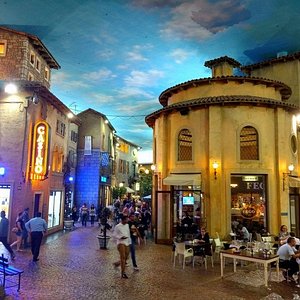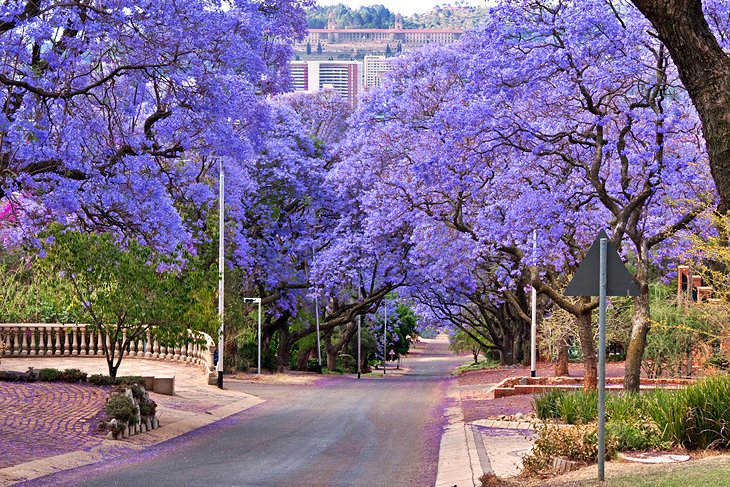Not known Details About Johannesburg North Attractions
Not known Details About Johannesburg North Attractions
Blog Article
The Single Strategy To Use For Johannesburg North Attractions
Table of ContentsThe Ultimate Guide To Johannesburg North AttractionsThe 10-Minute Rule for Johannesburg North AttractionsIndicators on Johannesburg North Attractions You Need To KnowThe 20-Second Trick For Johannesburg North AttractionsThe Only Guide for Johannesburg North AttractionsJohannesburg North Attractions Can Be Fun For EveryoneThe 8-Second Trick For Johannesburg North Attractions
Nevertheless you must keep safety and security in mind and tourists need to remain sharp whatsoever times when in strange environments. Talk to the locals when you remain in community to discover the location you are staying in. Johannesburg North attractions. When on the street (this does not put on mall and other safe settings) ideal general advice is to try your best to look like a regional and to avoid displaying any type of kind of wealth
An Unbiased View of Johannesburg North Attractions
Teacher Revil Mason O. J. (Thomson, 1946) discovered the Witwatersrand's pre-colonial history. His historical work took off the 'em pty land' myth, according to which the area was devoid of human habitation before the arrival of European inhabitants. In his publications Prehistory of the Transvaal: A Document of Human Task (1962) and Origins of Black People of Johannesburg and the Southern Western Central Transvaal Advertisement 3501880 (1986 ), Teacher Mason demonstrated the level of social and financial growth in the area prior to Europeans established foot below.

Johannesburg North Attractions for Beginners
In 1878, David Wardrop discovered gold in quartz capillaries at Zwartkop, north of Krugersdorp. In 1881, Stephanus Minnaar came across gold on the farm Kromdraai, near the Cradle of Humankind.
In March 1886, an outcropping (soon to be called the Main Coral reef) was located, fairly luckily, on Gerhardus Oosthuizen's farm Langlaagte. Some state that the Lancastrian coal miner George Pedestrian uncovered this coral reef. An additional itinerant English prospector, George Harrison (who had previously worked in Australian mines) acquired a prospecting permit in regard of Langlaagte in May 1886.
He determined to proceed in a pursuit for greener pastures, and disposed of his Langlaagte insurance claim for the baronial amount of 10. Alas: below lay the richest goldfield ever before discovered. The exploration of this abundant auriferous coral reef prompted a gold thrill that signalled completion of agrarian tranquillity in the southern Transvaal.
It would, within six years, become the biggest community in southerly Africa. Within a decade, it would certainly make the Z. A. R. till then an anarchical and bankrupt little state the most affluent country in Africa. By the turn of the century, the Z. A. R. was to go beyond Russia, Australia and the USA of America to end up being the world's leading gold producer, generating more than a quarter of view it the world's gold.
Johannesburg North Attractions Things To Know Before You Buy
It was called Ferreira's Camp, called after Colonel Ignatius Ferreira. He was a Boer adventurer upon whom the British authorities had bestowed the standing of Friend of the Most Identified Order of St Michael and St George (qualifying him to the post-nominal letters C. M. G.) in gratefulness for his role in the battle that had actually deposed the Pedi king Sekhukhune in 1879.
Two various other camps were established: Meyer's Camp on the ranch Doornfontein, and Paarl Camp. The latter was nicknamed Afrikander Camp; many people from the Cape Swarm cleared up there.

The Facts About Johannesburg North Attractions Revealed
This name acquired currency by word of mouth, such that the State Secretary affirmed the name to the Mining Commissioner on 9 October 1886. Stands in the town were auctioned on 8 December 1886. While some stands were cost 10, others were knocked down for as little as sixpence.
Two years later on, these erven were to transform hands for as much as 750 each. The tented camps decreased as a dorp of corrugated iron structures established and increased north of the mines located along the Main Coral Reef Road. Locations such as Jeppe's Community (where working-class immigrants erected their homes) and Doornfontein (where the wealthy new 'Randlords' began to build their luxurious i was reading this homes) were soon contributed to the ever-expanding map of the community.
All About Johannesburg North Attractions
Apart from the street names, there were no indications of Johannesburg being located in a Dutch-speaking country., nearly everybody spoke English and also the Federal government slaves addressed one in English, unless they were very first resolved in the Taal (or Reduced Dutch)'.
As such, Britain had a rate of interest in making certain optimum problems for gold production on the Witwatersrand, and that the gold was exported to London instead than Berlin an important made all the a lot more clamant by the Z. A. R - Johannesburg North attractions.'s boosting toenadering with Germany. Mine owners got on a clash with President Kruger, whose policy of monopolistic concessions (frequently granted to his cronies) prevented mining business from obtaining materials of materials (especially dynamite) and labour by themselves, cheaper terms
Facts About Johannesburg North Attractions Uncovered
In 1890, the Volksraad had limited the franchise to white men who had actually lived in the Z. A. R. for fourteen years or longer, therefore disqualifying most of the immigrants (that happened to be the significant factors to the fiscus). Frustration for the vote was a simple pretense for promoting a different agenda; many uitlanders concerned themselves as short-lived Related Site site visitors and had no objective of continuing to be in the Z.
Report this page